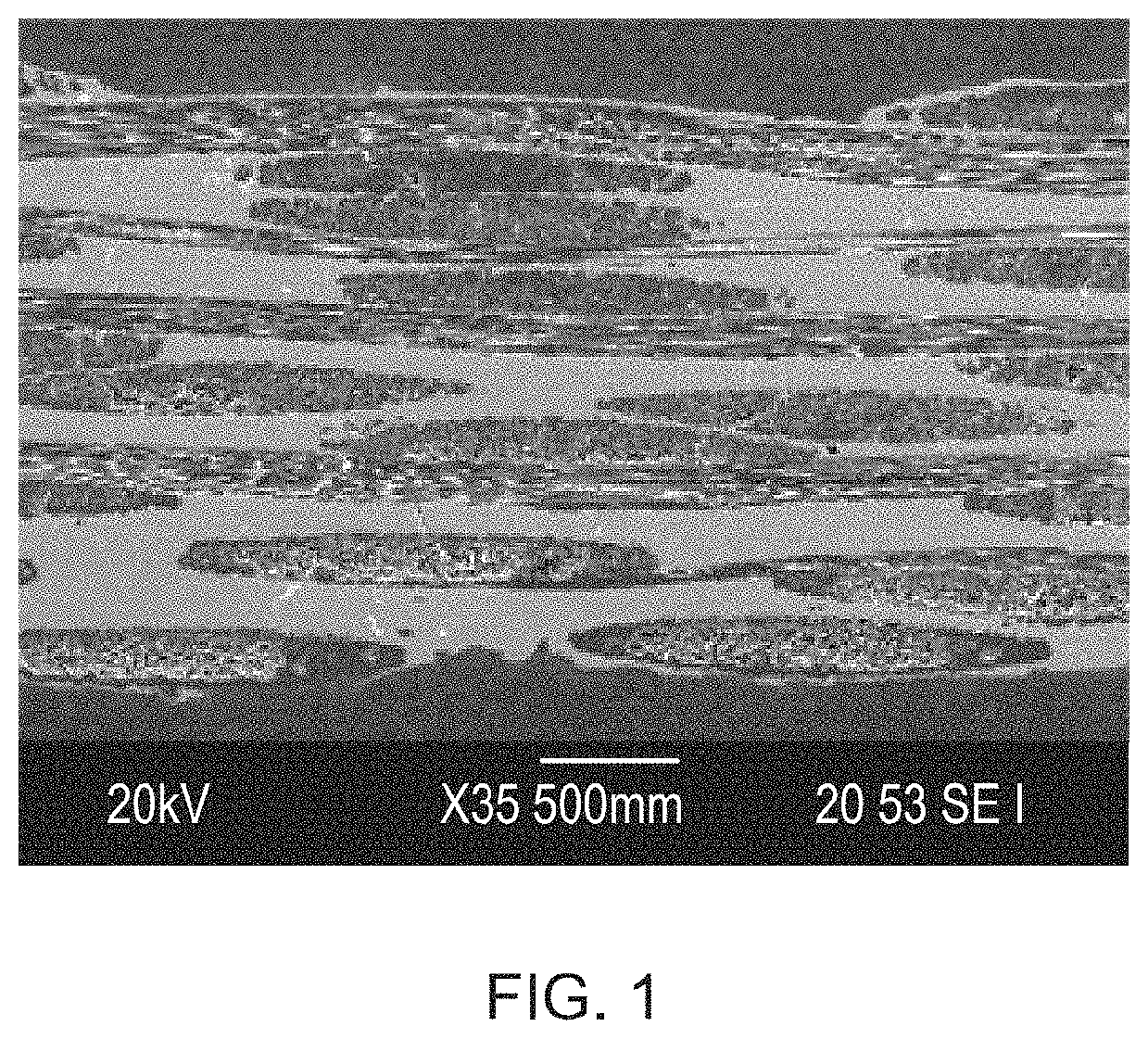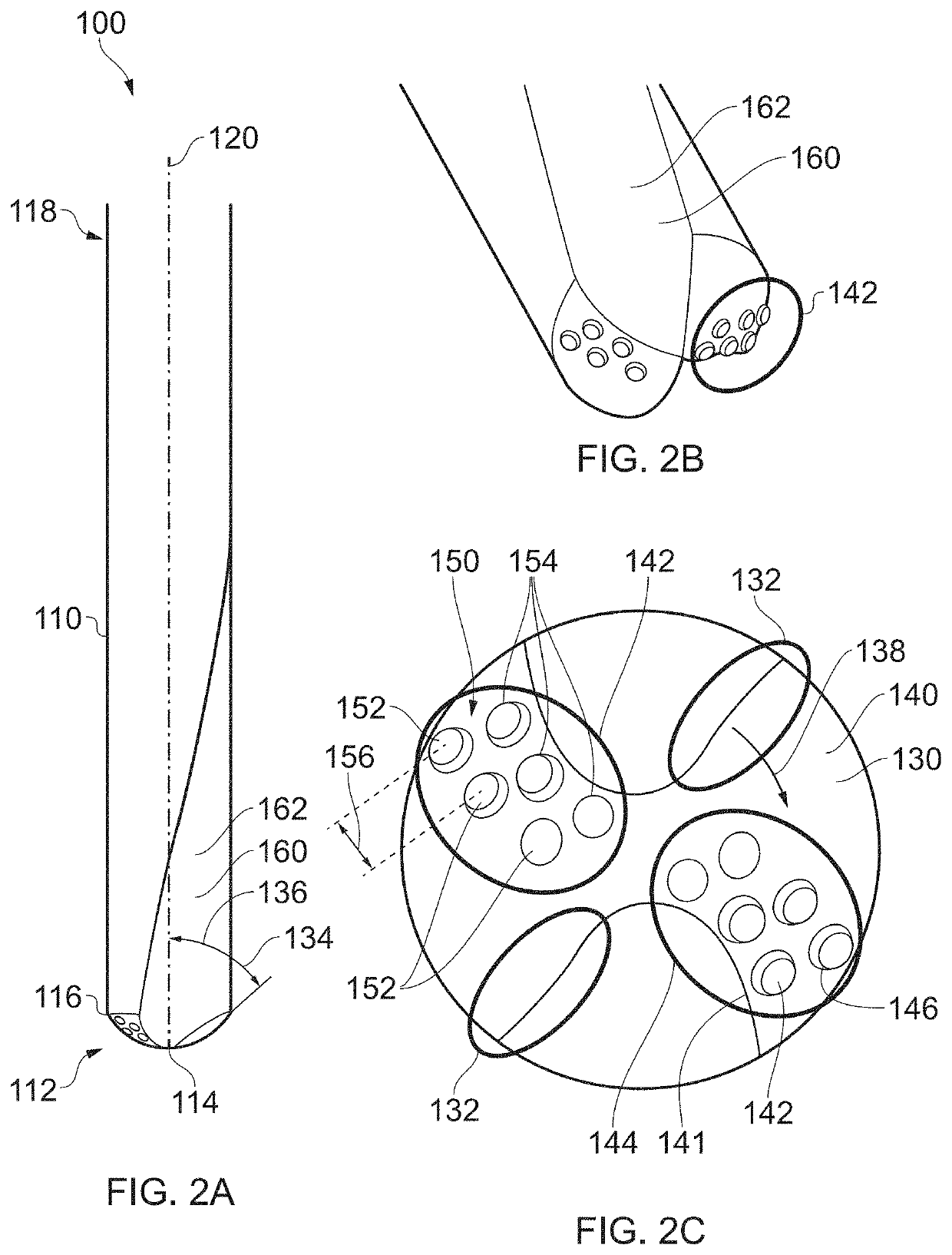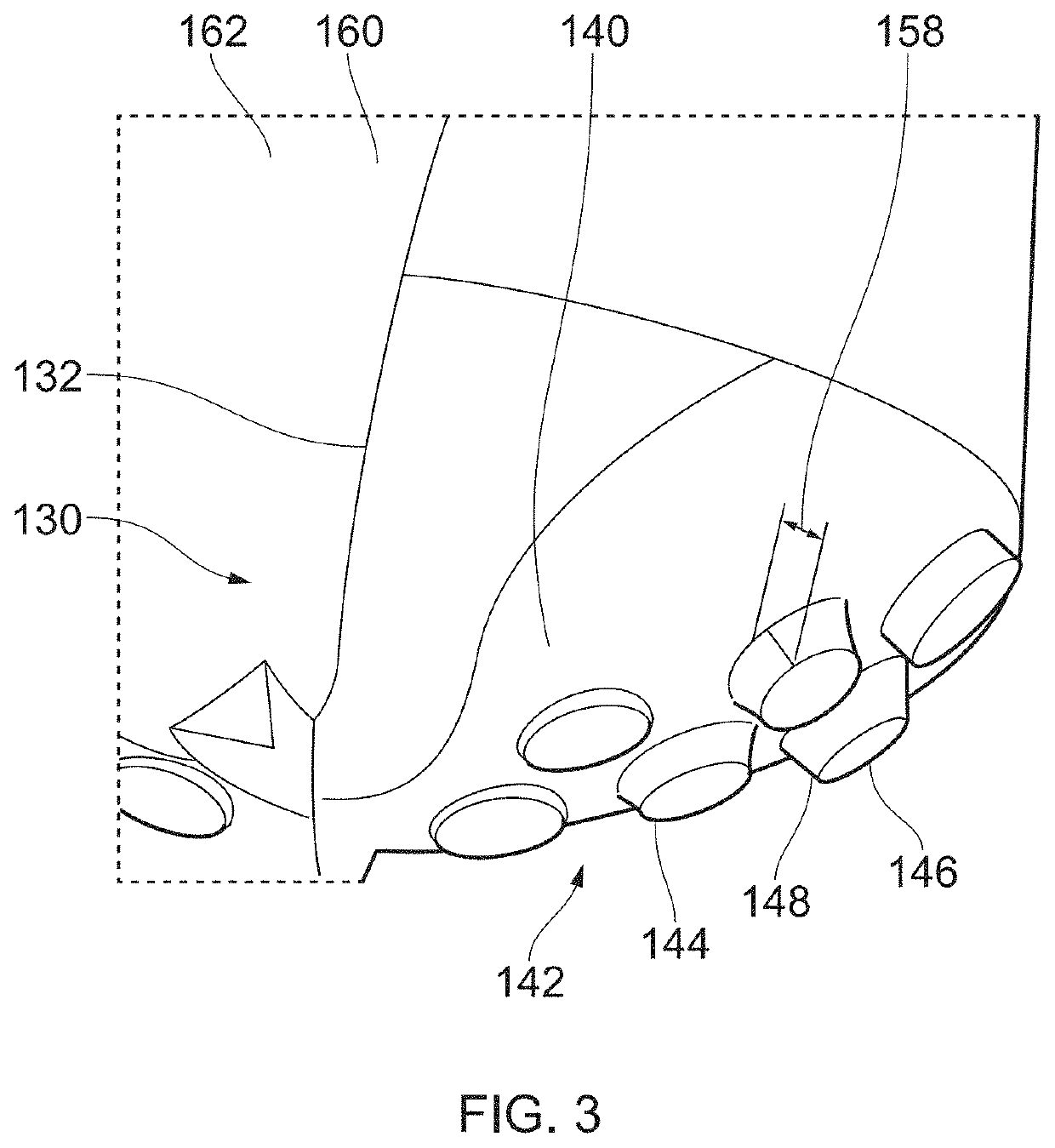Cutting tool
a cutting tool and tool body technology, applied in the field of cutting tools, can solve the problems of short working life, poor machined surface quality, low material removal rate of conventional cutting tools, etc., and achieve the effect of making the cutting tool more robust and useful to the user
- Summary
- Abstract
- Description
- Claims
- Application Information
AI Technical Summary
Benefits of technology
Problems solved by technology
Method used
Image
Examples
Embodiment Construction
[0075]Referring to FIGS. 2 and 3, a cutting tool according to an embodiment of the disclosure is designated generally by the reference numeral 100.
[0076]The cutting tool 100 comprises a tool body 110 having a first end 112 and an opposite second end 114. In the present embodiment, the tool body 110 has a generally cylindrical geometry. In other embodiments, the tool body 110 may have an alternative elongate geometry. The tool body 110 has a longitudinal axis 120.
[0077]In the present embodiment the second end 114 corresponds to a shank or holding portion (not shown) which would be used to hold the cutting tool 100 in a machine tool (not shown).
[0078]The first end 112 of the tool body 110 has a centre region 114 and a perimetral edge 116. The centre region 114 of the first end 112 corresponds to the intersection of the longitudinal axis 120 with the first end 112. The perimetral edge 116 of the first end 112 corresponds to the circumferential edge of the first end 112 of the first end...
PUM
| Property | Measurement | Unit |
|---|---|---|
| height | aaaaa | aaaaa |
| abrasive | aaaaa | aaaaa |
| angle | aaaaa | aaaaa |
Abstract
Description
Claims
Application Information
 Login to View More
Login to View More - R&D
- Intellectual Property
- Life Sciences
- Materials
- Tech Scout
- Unparalleled Data Quality
- Higher Quality Content
- 60% Fewer Hallucinations
Browse by: Latest US Patents, China's latest patents, Technical Efficacy Thesaurus, Application Domain, Technology Topic, Popular Technical Reports.
© 2025 PatSnap. All rights reserved.Legal|Privacy policy|Modern Slavery Act Transparency Statement|Sitemap|About US| Contact US: help@patsnap.com



